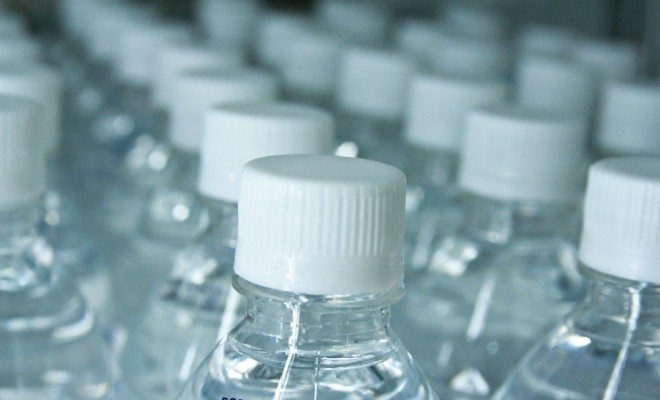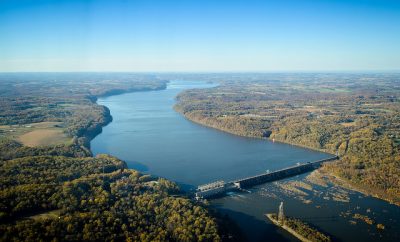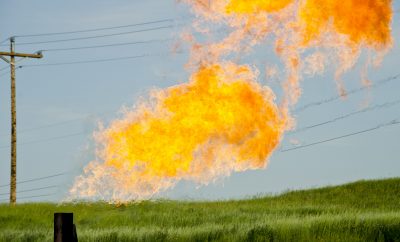 Image courtesy of [Steven Depolo via Flickr]
Image courtesy of [Steven Depolo via Flickr]
Energy & Environment
Water Instability in the United States: Can Anything be Done?
The United States is viewed both domestically and internationally as one of the most water secure nations in the world. The 2011 California drought represents one of the first developments to challenge this notion in many years. California’s four-year rain shortage has brought the realization that a community can’t survive without a water source to the attention of many Americans and that the United States isn’t immune to water scarcity. This year’s El Niño finally brought rain to California, but seemingly just as the drought was temporarily broken on the West Coast, media attention fell onto another water-related crisis: Flint, Michigan.
Flint and Beyond
Three years ago Michigan Governor Rick Snyder appointed Darnell Earley as the Emergency Manager of Flint, giving him complete control over the city’s budget and charged him with saving the city from bankruptcy. In 2014, in a move calculated to save the city millions of dollars, Earley made the executive decision to relocate the city’s drinking source from the distant Lake Huron to the much closer Flint River. While the Flint River may have been more economically convenient, the water was not properly treated with an anti-corrosion chemical to prevent erosion of lead pipes. The water was understood to be toxic from years of being used as a chemical dumping ground by Flint’s now extinct automobile industry, which also made it significantly more corrosive than most sources.
The water looked and smelled unpleasant, and while it wasn’t fully understood at the time the switch was made, water in Flint contained dangerous quantities of lead residue from local pipelines. After the switch, Flint residents experienced hair loss and fell seriously ill, leading them to quickly contact city officials. Earley, the Governor’s office, and the State Health Department were all contacted but largely ignored complaints. It took two entire years before a team of researchers from Virginia Tech did an official study that proved the water was highly toxic. The health consequences of those two years will last a lifetime for the people of Flint, and has rendered the entire community unstable.
Flint serves as a chilling example of how dependent an area and its people are on their water source and marks a shift in national attention toward the idea of water instability in America. The story of the Flint water crisis went viral and has been covered widely since the revelations. In January 2016, Time Magazine published an article on Flint titled, “The Poisoning of an American City,” which was featured on its cover.
Flint became one of just a few nationally-circulated stories of a community experiencing water pollution since before the Clean Water Act was passed and in the months following the Flint crisis, similar stories have been popping up all over the country. On January 23, attention turned to St. Joseph, Louisiana, where the drinking water runs brown from aging and malfunctioning pipelines. Then on February 21, CNN covered a story on Crystal City, Texas where the faucets and showerheads dispense sludge due to sediment buildup in their storage tanks.
A History of Water Legislation in the United States
Many will argue that America is currently experiencing its most water-secure period in history. Prior to the 70s, the United States had essentially no regulation for pollution and chemical dumping was widely practiced by the industrial sector. In the late 60s only about one-third of U.S. waters were considered safe to swim in and fish from. According to a 1970 report from Bureau of Water Hygiene, a sample of American tap water supplies found that 36 percent exceeded the limits of established drinking water standards. It required several major tragedies to change the political attitude toward water as a public health issue, including toxic spills and oil leaks. Perhaps the most memorable of these events happened in 1969 in Cleveland when the Cuyahoga River lit on fire due to its high quantity of flammable waste. The image of a burning river emblazoned Time Magazine and led to a national outcry.
America’s first water-related piece of legislation was the Federal Water Pollution Control Act of 1948, which was followed by five additional bills written between 1956 and 1970. In 1972, in response to major pollution disasters, the Federal Water Pollution Control Act was revised and expanded in order to give it a much larger scope of control. The newly dubbed Clean Water Act of 1972 was passed with bipartisan support and in spite of a veto from President Nixon, representing the most influential piece of water-related legislation in American history.
While previous water quality bills ultimately held the states responsible for interpretation and enforcement, the Clean Water Act marked a departure from this line of thinking–giving the federal government direct authority to regulate water quality. The act gave the Environmental Protection Agency (EPA) the power to set industrial wastewater standards, made it illegal for individuals to dump waste in navigable waters, and forced industrial and municipal facilities to obtain permits to discharge their waste. These permits could also be revoked–effectively shutting down a business if the discharges were found to exceed EPA standards. Industries across America were forced to upgrade their technology in order to generate smaller waste streams and use a secondary treatment on the waste that they did create. The Clean Water Act targeted the largest sources of pollution–toxic waste dumping, oil spills, and large sewage leaks–using better technology as the primary solution.
The Clean Water Act was amended three times during the 70s and 80s to strengthen its ability to regulate waste. The EPA’s power was further increased by the Ocean Dumping Act in 1972 and the Safe Drinking Act in 1974. These efforts had a huge influence on reducing large scale pollution and has successfully increased the percentage of swimmable and fishable waters in the United States from one-third to almost 60 percent, as well as dramatically decreasing the load of contaminants in drinking water across the nation.
So Where Are We Now?
While considerable progress has been made, the Clean Water Act was written with the goal of making the United States’ waters swimmable and fishable by 1983. However, in 2016 the EPA has admitted that over 40 percent of U.S. waterways don’t meet national standards. While regulations have significantly improved, they’ve failed to protect many communities from pollution. Flint, Crystal City, and St. Joseph are extreme examples of water sources gone wrong, but they’re far from unique. Citizens across the country are regularly exposed to dangerous chemicals through the drinking water. The Natural Resource Defense Council studied major cities all across the United States and found that many of them had tap water that contained a number of contaminants. The most common and deadly of these contaminants were lead, pathogens, arsenic, radon, and perchlorate rocket fuel.
The D.C.-based Environmental Working Group conducted a similar study that took place over the course of five years, testing for 316 different contaminants in water supplied to 48,000 communities throughout the country. They found the same trend of pollutants appeared regularly in drinking water throughout the country, especially in concentrated urban areas. They ranked different communities on the percentage of chemicals found in the water, the number of different chemicals present, and the level of danger of each individual community.
Both the Natural Resources Defense Council and the Environmental Working Group found that some of the most severely polluted areas in the U.S. were major cities, including San Diego, Las Vegas, Jacksonville, Albuquerque, Houston, and Denver, all of which had a number of dangerous contaminants in their drinking water exceeding the EPA’s safe limits. Across the nation, cities have been using inaccurate water testing practices, withholding information from their citizens, and completely bypassing EPA guidelines.

“Sewage Contaminated Water” courtesy of Tony Webster via Flickr
Obstacles to Keeping Water Clean
Regulating the discharges of America’s entire industrial and municipal sectors is a task of momentous proportions and many dangerous chemicals don’t specifically have regulations attached to them. As such, many companies can get away with dumping illegally. If an industry is particularly critical to the economy of an area, it may have a blind eye turned to its actions, at least from local governments. Furthermore, there are also cases like Flint where much of the damage had already been done. The auto industry responsible for the majority of the dumping in the Flint River, with the exception of Flint Motors, died out long ago. All the companies that could now be fined or forced to pay for the cleanup have gone bankrupt.
There are also several legal loopholes that certain industries can use to legally pollute groundwater. Perhaps the most significant of these is the Energy Policy Act of 2005, which allocated federal subsidies to different energy sources with the majority of the funds going to the fossil fuel industry. However, beyond covering subsidies, the act also gave hydraulic fracturing companies the privilege to legally inject water based pumps into the ground without publicly releasing the chemicals used in the underground pumping process. This became known as the Halliburton Loophole, due to the fact that the Energy Policy Act was designed by a team directed by Vice President Dick Cheney, a former CEO of Halliburton.
A large part of the problem is also that the Clean Water Act regulates pollution that comes from point sources, or identifiable and quantifiable streams of pollution, such as oil leaks or sewage streams. However, up to 50 percent of America’s pollution is estimated to come from non-point sources, which are widespread and difficult to track or control. Pollution can often enter water sources simply by getting carried along with rainwater. Non-point sources include animal feces, particularly from livestock and pets (whose feces contain different, more harmful bacteria and pathogens as a result of their unique diets); nitrogen and phosphorus from lawn fertilizers; and agricultural pesticides, dirt, general sediments, and rock salt; the leaking residue of aging septic tanks; and numerous other examples. Aging and deteriorating piping systems can also transport contaminants directly to your home as water moves through them.
The problem is not just with water pollution but also with excessive over-withdrawal from water sources. A body of drinking water is restored naturally with rainfall that runs–both as surface water and groundwater–into lakes, ponds, and reservoirs. However, if a community continuously withdraws water at a faster rate than the watershed can restore it, the level of accessible drinking water will lower and lower until the body of water is completely undrinkable. This problem is seen at its worst in highly populated urban areas and tourist destinations where large water withdrawals are necessary to sustain the community.
Major American waterways such as the Colorado River and Lake Mead, both of which provide water to tens of millions of people, are at risk of drying up within the next few decades. Long-term water use is often not taken into account by city planners; for instance, Los Angeles and Las Vegas are currently America’s two fastest growing cities and both are built on literal deserts. El Niño’s unorthodox rain patterns have brought temporary relief to these areas, but the pattern of dry, arid weather will eventually resume and the California drought shows every sign of resurfacing. These problems are also not limited to the West–40 out of 50 states are currently predicted to have one or more regions that will experience water shortage within the decade.
Recent Policy Developments
The most relevant recent water-related policy development happened in 2014 when the Obama Administration passed the Waters of the United States Rule, also known as the Clean Water Rule. The purpose of the rule was both to give more regulatory oversight to the Environmental Protection Agency and to expand the definition of protected waters beyond lakes and rivers to also include smaller waterways such as streams and tributaries, which ultimately flow into lakes and rivers and thus impact the health of our drinking water.
Republican members of Congress have objected to the Clean Water Rule on the grounds that it unfairly increases federal power where the government has no right to assert control over businesses, farmers, and private landowners. The rule’s opponents have attempted to overturn it using the Congressional Review Act, and on January 13, the House of Representatives effectively voted to overturn the rule. Only six days later, on January 19, President Obama responded by vetoing the overturn. Without the necessary two-thirds majority required to override his veto, the Clean Water Rule will continue to be U.S. law.
Conclusion
With the rate and severity of droughts increasing, so does our understanding of the sheer volume of polluted water sources throughout the nation, and it’s more important than ever to take water instability seriously. Despite some progress in the past few years, the same dangers are just as alive today as they were in the pre-seventies era. This is illustrated well by the fact that in 1969 the burning Cuyahoga River made the cover of Time magazine and 57 years later we see yet another polluted waterway–this time the Flint River–back on the magazine’s cover. If there’s a positive side to the recent surge in media attention toward these events it’s the idea of a water crisis as a tangible, possible thing that could happen in America may now be present in the minds of American citizens and voters.
There is no silver bullet to water instability; any approach to making American watersheds sustainable must involve a number of different methods. Some cities in America have banned the use of chemical rock salt for roads and others have banned the use of phosphorous and nitrogen-based fertilizers. In response to the drought, California set strict laws regulating the amount of water each citizen was allowed to use and that each establishment was allowed to offer. As the population continues to grow, especially in urban centers, more and more areas may have to regulate water withdrawal with an eye to the future. Perhaps one of the most needed changes is for more and more areas to regularly test their water for contaminants to determine its safety and create a baseline measure to determine changes. The most important element of water sustainability is to act now and plan for the future, understanding that the health of a community directly correlates to the health and security of its water source.
Resources
ATTN: U.S. Cities are Underreporting Heavy Metals in their Water Supply
Daily Finance: 10 American Cities with the Worst Drinking Water
Encyclopedia.com: Clean Water Act of 1977
EPA: Summary of the Clean Water Act
EPA: What the Clean Water Rule Does
The Guardian: Flint Water Crisis: Congressman says EPA guilty of ‘Flat-out Incompetence’
NRDC: Study Finds Safety of U.S. Drinking Water at Risk
The New York Times: A Question of Environmental Racism in Flint
The New York Times: Events that Lead to Flint’s Water Crisis
The New York Times: Unsafe Levels of Lead in Tap Water Not Limited to Flint
Salon: It’s Not Just a Flint Problem: Other U.S. Cities are Suffering from Toxic Water
Salon: America’s Water Crisis is so Much Bigger than California
Water Encyclopedia: Clean Water Act
The Water Project: Water Scarcity in U.S.
Earth Works Action: The Halliburton Loophole
CNN: Water Runs Black in Texas Town Already Wracked by Corruption Arrests
Environmental Protection Agency: Natural Gas Extraction – Hydraulic Fracturing
The Hill: House Votes to Overturn Obama Water Rule
Time: The Burning River that Sparked a Revolution
USA Today: Obama Vetoes Attempt to Kill Clean Water Rule
The News-Star: Water Woes Plague St. Joseph








Comments